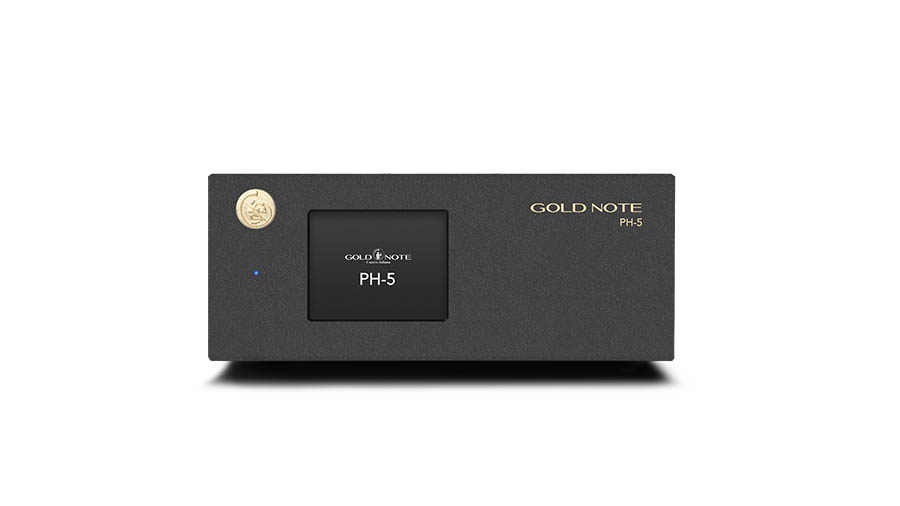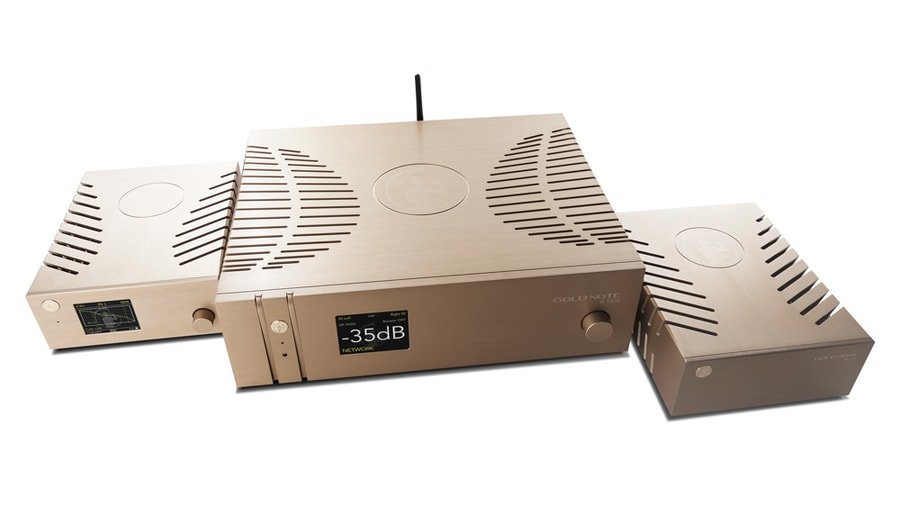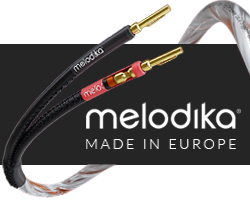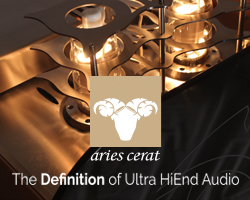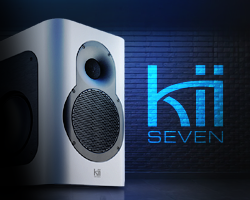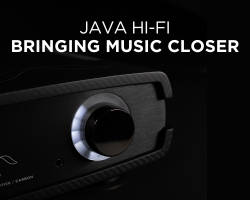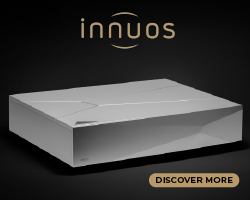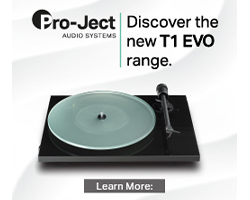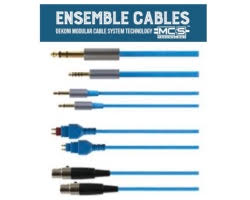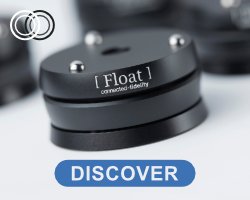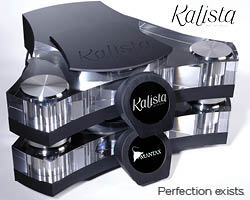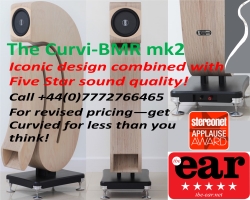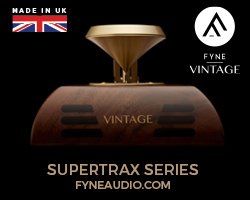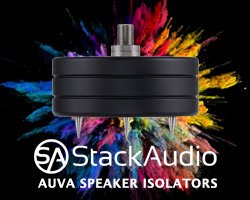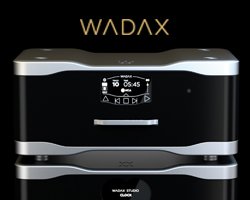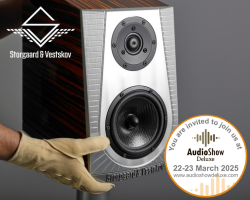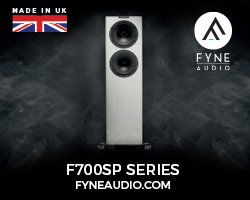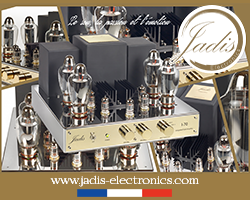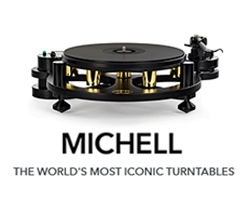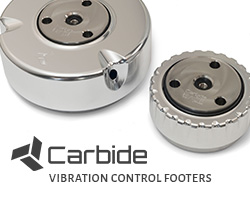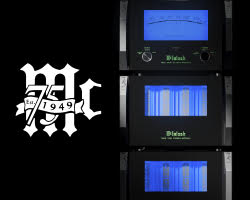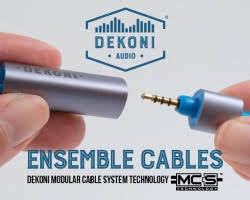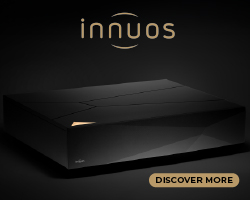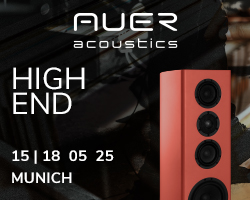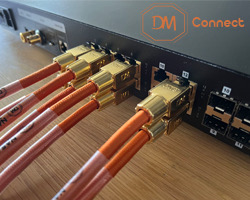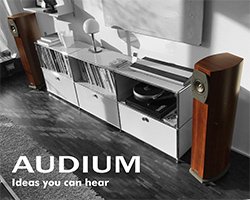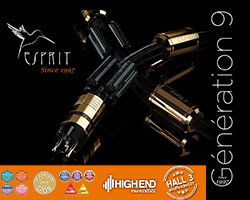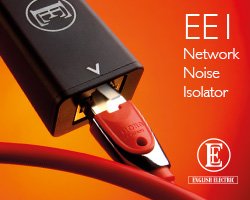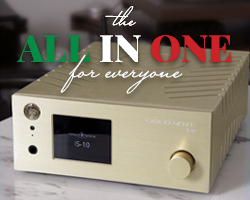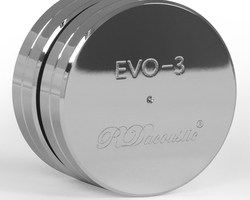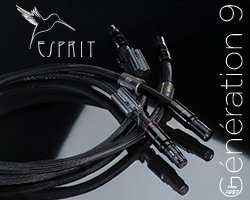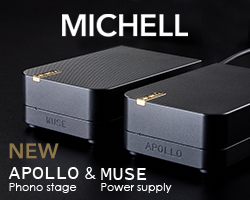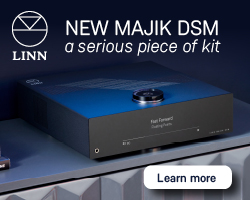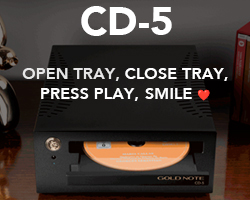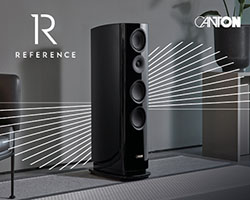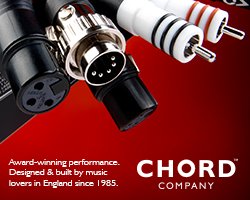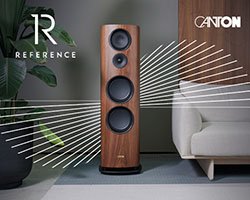GOLD NOTE PH-5 PHONOSTAGE REVIEW
The Gold Note PH-5 Phonostage is a sub-£1000 phonostage with an innovative touchscreen, cute styling, different equalisation curves, and is adaptable for various Moving Coil cartridges and Moving Magnet cartridges. Stuart takes a listen.
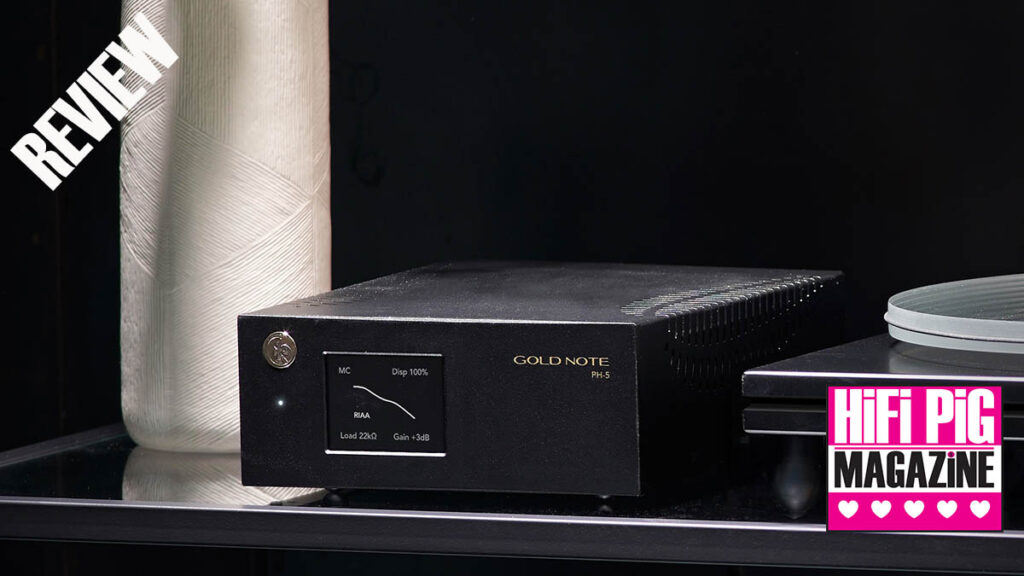
Back in April 2022 I reviewed this Italian company’s £11K+ PH 1000 phono stage which is an all-singing and all-dancing phono-amplifier with a huge amount of configurability with regards to EQ curves, gain levels, load levels, capacitance levels and commented that “Sonically it is wonderfully dynamic and open sounding with a midband presentation that will delight, though not at the expense of everything else.” However, for that kind of money and with the degree of flexibility it offers, it requires you to be very serious about your vinyl playback system and as such it was a niche product. Step up the Goldnote PH-5 phonostage that costs a much more affordable £950, though for another £600 you can add a dedicated external power supply – in this review I’ll be talking just about the bare-box PH-5 without the PSU.
However, despite the relatively affordable price of this phonstage, you still get three different EQ curves; the standard RIAA, plus Decca London and American Columbia curves (with each having an “enhanced” option that extends the frequency response up to 50kHz), you get gain from 40dB to 60dB for moving coil cartridges, and four options for moving coil cartridges. There are nine input impedance options which are 10, 22. 47, 100, 220, 47, 1000, 22k and 47k Ohms. Output impedance is 50ohms.
So, despite its relatively affordable cost, the PH-5 seems to be a pretty flexible bit of kit whether you are using a moving-coil cartridge or a moving-magnet cartridge.
One of my bugbears with many budget phonostages is that altering the different parameters on offer requires you to fanny about with fiddly DIP switches. In contrast, the PH-5 boasts a touchscreen interface where all the various parameters can be changed…I like this a lot and you can change them in realtime when you are playing your tunes. The touchscreen does everything, including turning the unit on from standby (see later) and allowing you to adjust the screen brightness, MM/MC selection, load, gain, and the curve. The screen is really responsive too, but maybe a little fiddly for some – I had no issues despite considering myself somewhat sausage-fingered.
The digital nature of the touchscreen would suggest that you are looking at a product that operates in the digital domain, but the signal path inside the PH-5 uses discrete “audio grade” components and sealed switches to keep the signal path as short as possible. Once you make a change on the touch screen (I can’t tell you how much I like this innovation and so will likely repeat myself even more than usual) a series of relays deals with switching and you can hear this click into action when you change a parameter.
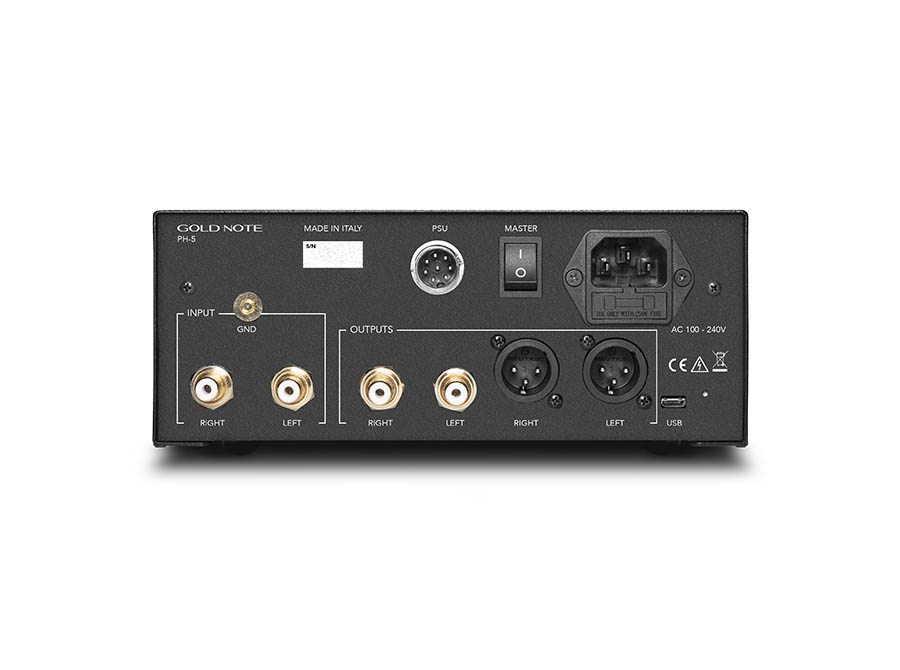
BUILD AND STYLING OF THE GOLD NOTE PH5 PHONOSTAGE
The PH-5 is a pretty dinky but good-looking box that comes in this case in black with a gold GOLDNOTE badge front top left and an understated GOLD NOTE stencilled logo top right. It looks great and the compact (200mm x 80mm x 260mm (HWD) dimensions mean it won’t take up too much real estate on your rack. It weighs 1.2 kg.
Around the back you have RCA inputs, and RCA and XLR outputs, a grounding post, an input for the optional PSU, a USB input presumably for firmware updates, and finally you get the IEC input and master power switch – there is no traditional power switch on the front of the box.
Apart from four rubber stud feet on the bottom, that’s your lot.
This is a stylish looking box that is very much in keeping with the rest of the GOLD NOTE range. Incidentally, you can also get a couple of CD players, a streaming DAC, a streaming headphone amp, a stereo amplifier, and an integrated all-in-one integrated streaming amplifier that all come in this small footprint format. I like this styling a great deal and I think it will appeal to folk beyond the usual audiophile brigade – and that has to be a good thing.
Turning on the PH-5 involves you turning on the main switch at the back and then (I didn’t read the instruction book at first) and then moaning that there’s nowhere to turn the unit on properly. A two-second look at the user manual indicates that another couple of seconds of touching the touchscreen has it light up and begin working – excellent!
SOUND OF THE GOLD NOTE PH-5
What I’m looking for in a phonostage is for it to be quiet, dynamic, and (for my purposes) to work with MC and MM cartridges. This latter point may not be the case with everyone and some will require only the MM input and so paying for the extras may be unnecessary. Likewise, some may not need any different curves other than the standard RIAA, but there is some speculation that after 1954 (when RIAA became the standard EQ curve) not all record manufacturers adopted it immediately, so having different EQ curves may be beneficial.
I tested the PH-5 with our regular HANA UMAMI RED (MC) and with the VERTERE SABRE (MM), both which I am very familiar with as they are our references. Throughout the testing process, the turntable used was the TECHNICS 1200G that I use on a daily basis. For all cartridges I used the NASOTEC SWING HEADSHELL.
With the Hana Umami Red bolted onto the arm, the first album I reached for was the excellent half-speed master of Solid Air by John Martyn and I was taken aback as to how good this phonostage sounded, though I did up the gain to +3dB. Surface noise was negligible which was good and the unit itself was silent in operation as far as I could tell. Dynamics were good, but lagged a little in comparison to our LAB 12 melto 2 (£3750 when tested) but not to the extent that most folk would notice unless listening hyper-critically. Small details in the title tune like Martyn moving his fingers on the fretboard were easy to hear and overall I was a happy bunny with this record. The bassline was a little less pronounced than I’m used to but it was all there, just a bit further back in the mix. Martyn’s vocals had that “lazy” character that they should and I thoroughly enjoyed the rest of the record.
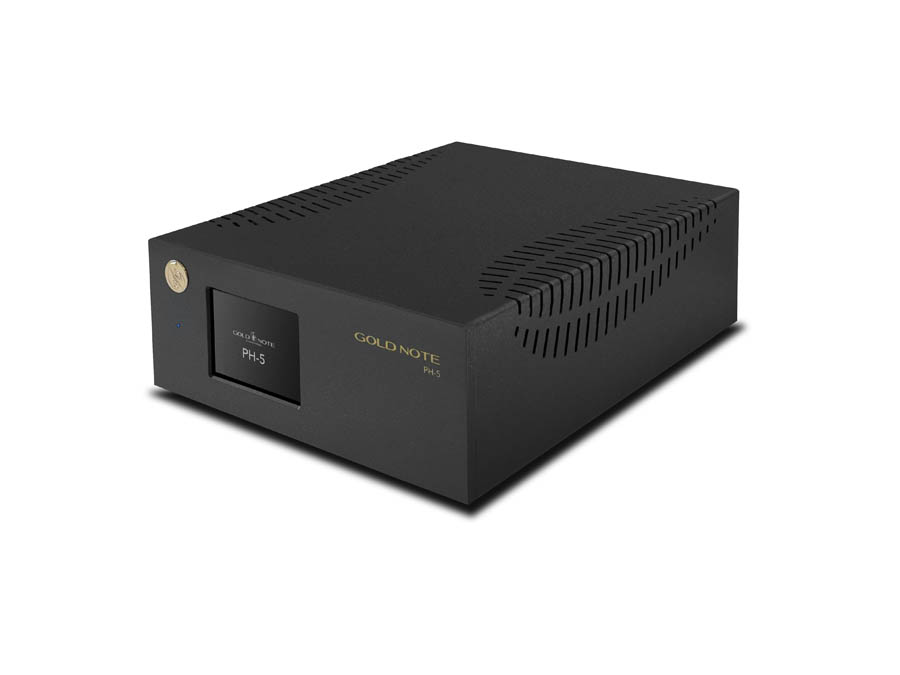
Switching the cartridge over to the Vertere cartridge, the detail was a little less pronounced, but that’s as much to do with the cartridge as anything the phonostage is bringing to the table. Listening to the same album, there was still the lack of surface noise and loads of detail in the record to pull out should you wish. Overall, the PH-5 didn’t seem to add a great deal of its own character to the record, perhaps a little duller sounding (rolled off, perhaps) when compared to the LAB 12 phonostage. Overall, and up to this point of the tests I found it hard to criticise the PH-5.
Back to the HANA and the fantastic Chanel 1 record of the Revolutionaries titled Well Charged. This is 70s dub and whilst the recording is not great, the HANA and the PH-5 pulled enough of the detail out to let you know that it’s not that well recorded, though the music and the mix are fantastic. The PH-5 got through to the listener the grittiness and (for want of a better word) dirtiness of the effects – a good part of the appeal of this record. Bass was again a little further back than I’m used to but overall the sound was balanced, and dare I say laid back. Being laid back is not necessarily a bad thing and I’d rather that than have a phonostage push the top end to enhance the illusion of detail. Again, I was very satisfied.

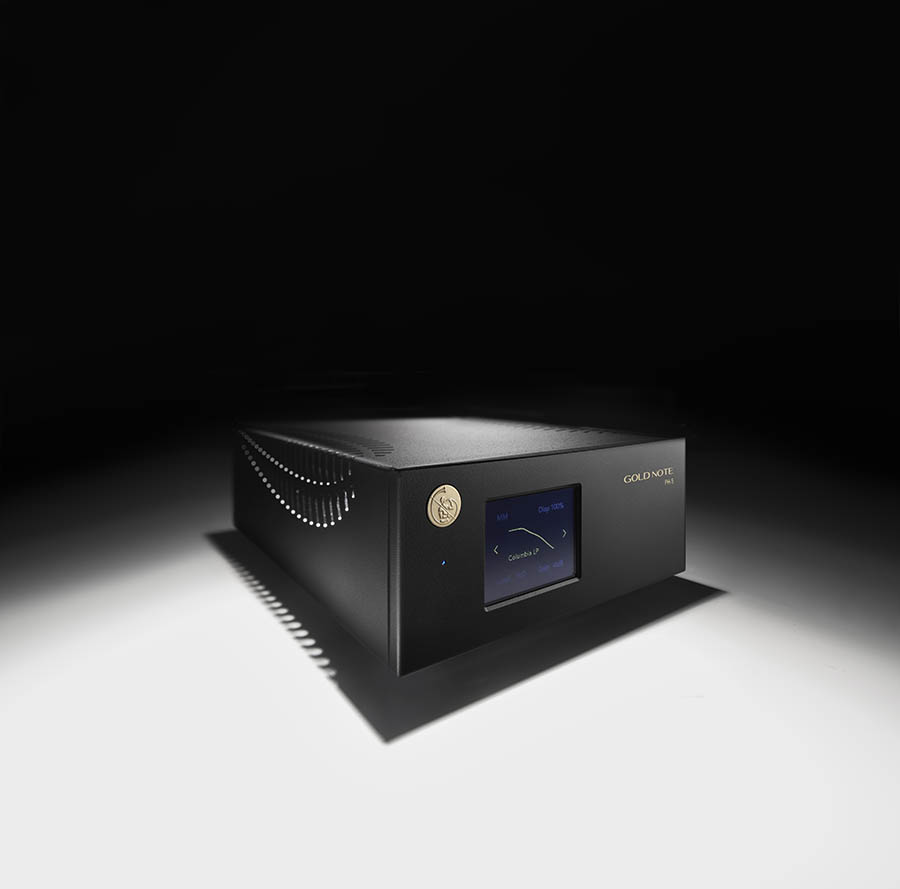
Back again to the Vertere with the same track and I actually think this cartridge is better suited to this recording in some ways. Again, the PH-5 lets the character of the cartridge through to the listener and again, I’ve little to complain about.
QUIBBLES
Not a lot in all honesty other than me not having read the manual to work out how to switch it on. It may be a little too laid back and not incisive enough for some folk, but then what you lose in that respect you gain in being able to listen to tunes without getting an earful of upper-end noise. The bass may also be a bit laid back for some.
CONCLUSION
During my time with the PH-5, I experimented extensively, swapping between various cartridges and records, and was consistently impressed with the results. This phonostage has a composed and refined character, steering clear of any brash or overpowering tendencies, allowing the unique qualities of each cartridge to shine through. While it may not deliver every nuance or imperfection etched into the grooves with surgical precision, this slight softening could be seen as a blessing, especially when considering the less-than-stellar production quality of some modern records and as highlighted when I listened to the 70s dub album I mention.
What the Gold Note PH-5 delivers is a sound that strikes a harmonious equilibrium, offering just the right amount of detail extracted from your cartridge’s interaction with the record grooves. It manages to present this detail with finesse, avoiding any harshness or aggressiveness that could detract from an enjoyable and engaging listening experience.
Overall I can heartily recommend Gold Notes PH-5 and even in a system that is way out of the price-range of the phonostage’s asking price, it didn’t embarrass itself in any way at all.
I’m awarding the Gold Note PH-5 phonostage a well-earned 5 hearts. It only falls short in comparison to our significantly more expensive reference phono-preamplifier, where it doesn’t quite match the razor-sharp incisiveness of its pricier counterpart. That said, the PH-5 has a lot going for it – its feature set is impressive, the design is visually appealing, and the functionality is excellent. The touchscreen, in particular, is a standout, offering a responsive, tactile experience that I found particularly satisfying and easy to use, even if my fingers belong on a plate with a couple of fried tomatoes and a fried slice.
AT A GLANCE
Build Quality and Features:
Cool looking and great form factor that will fit not just HiFi racks but also more conventional furniture – IKEA, I’m looking at you here
Great feature set that not only allows for MM and MC cartridges but also different EQ curves – whether you use them is a different matter
The touchscreen is a stroke of genius and I really did grow to love it
Upgradeable with an external PSU
Sound Quality:
Errs on the edge of warmness when compared to our more incisive reference, but many will love this characteristic, particularly with crap recordings
More than acceptable dynamics and transparency for the asking price
Allows a good deal of the cartridge’s character to come through for the asking price
Value For Money:
Not at all silly money for a well-featured product from a known manufacturer, meaning it should hold its value well
We Loved:
The touchscreen and even the sound of the relays clicking into action
The somewhat forgiving nature of the PH-5 with poor or old recordings
Flexibility with loading and gain
Deadly quiet (low noisefloor)
We Didn’t Love So Much
Actually, there’s really not a lot to moan about with this phono stage at all. In terms of absolute fidelity, it may be lacking when compared to much more expensive phono stages, but for the majority of folk, this will be as far as they want or even need to take their vinyl replay system
Price: 890 Euros
Elevator Pitch Review: The Gold Note PH-5 is a highly versatile phono-preamplifier, compatible with both MM and MC cartridges, and it includes a selection of EQ curves beyond the standard RIAA. While the additional EQ options may hold more appeal for some users than others, their presence adds to the unit’s flexibility. Regardless of how you use these features, the PH-5 consistently delivers a smooth and enjoyable listening experience that remains free of harshness or listener fatigue, even during extended sessions. Its compact form factor and excellent touchscreen interface are standout features, offering a user-friendly alternative to the often-frustrating world of fiddly DIP switches used on some phonostages.

Stuart Smith
SUPPLIED SPECIFICATIONS GOLD NOTE PH 5 PHONOSTAGE
EQUALISATION CURVE CONTROL
3 EQ curves (RIAA, Decca London, American Columbia) all with Enhanced option
INFRASONIC FILTER
10Hz/36dB octave
FREQUENCY RESPONSE
20Hz -20kHz ± 0.3dB
Enhanced 20Hz-50kHz ± 0.3dB
THD (Total Harmonic Distortion)
<0.05% @ 1kHz
SIGNAL TO NOISE RATIO
89dB
DYNAMIC RESPONSE
105dB
INPUTS AND OUTPUTS
ANALOGUE INPUT
1x RCA stereo MM/MC
INPUT SENSITIVITY
0.1mV MC up to 10.0mV MM
INPUT IMPEDANCE
9 options [10Ω, 22Ω, 47Ω, 100Ω, 220Ω, 470Ω, 1000Ω, 22kΩ, 47kΩ]
GAIN
MM= 40dB
MC= 60dB
with 4 options [0dB, + 3dB, ± 6dB]
CAPACITANCE (MM ONLY)
220pF
AUDIO OUTPUTS
1x unbalanced RCA
1x balanced XLR
OUTPUT IMPEDANCE
50Ω
DIMENSIONS
200W | 80H | 260D mm
290W | 180H | 390D mm – boxed
WEIGHT
Kg. 1.2 – net
Kg. 2.2 – boxed
















































